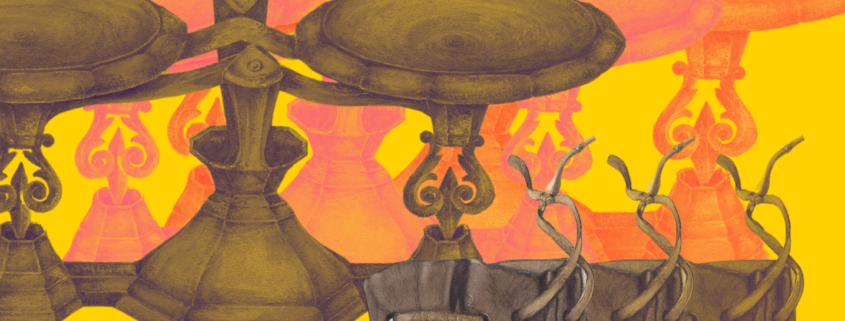How to Price Artwork: the Objective Price
Large or small, new or old, all businesses carefully evaluate pricing—and reevaluate them often. To be sustainable, businesses of every size set a minimum price to cover all costs and expenses. This is the objective angle on how to price artwork.
All businesses have direct and indirect costs associated with goods and services. As artists (especially starting out) your time is the most slippery part. Your time is a cost and an expense. Do you know what it is worth? Breaking it down and following the categories below, is the first step toward paying yourself what you deserve for your work.
Direct Costs of Artwork
Direct costs of a good or service are purchases and expenses (including your time) that would not exist if you did not produce a product or deliver services. These are “direct” costs, because they can be directly connected to specific deliverables. Start here to know how to price artwork.
In a restaurant, direct cost includes the price the restaurant paid for the piece of salmon you ate and the approx. twenty minutes of wage labor put directly into getting your piece of salmon from the cooler to the table.
Often, artists and creative businesses sell both products and services.
Products have material costs directly connected to their production.
- A painting: canvas, paint, media,
- A print: printer design layout, paper/matting, printing
- Merchandise: fabricator design layout, materials/fabric/etc., fabrication
- Don’t forget—your time to do any part of production is a direct cost.
Services are time based (usually evaluated hourly or daily)
- If you are on a job site working (billing for this time is a definite)
- If you are communicating with your client to plan, strategize, design the service
- If you are running errands for a gig
Usually, an artist’s work typically includes both products and services. The associated costs are unclear at times. To get started, track your direct costs and time. If these costs are not covered, the business is losing money and not sustainable.
Indirect Costs of Being in Business
Next, billing for direct costs is not enough. Regardless of if a product is sold or service rendered, business has an expense to pay. These indirect costs factor heavily into how to price artwork. “Indirect” costs cannot be connected directly to a discrete product or service. Typically, these are the costs of simply existing as a business, regardless of whether you’re selling anything. They include:
- Space to make, operate, or store. (e.g. a studio or office)
- Tools/equipment to make (that are not consumables related to specific products or services)
- Tools/equipment to operate the business (e.g. computers, software, printers)
- Insurance to protect in a litigious world
- Marketing services (or your time planning, producing and sharing content)
- Professional support services (e.g. accountant, lawyer, creative coach)
- Sales support (e.g. application/grant fees, sample products)
And don’t forget your time (or your staff’s time) to do these operations.
How do you know whether your time is a direct or indirect cost? Look at the restaurant example again: when the cook prepared your piece of salmon their time was a direct cost. But when the cook sharpened their knife, pre-heated the grill, and cleaned their station before and after—this time is an indirect cost. The food couldn’t be prepared without this labor, but that time did not directly create the final product sold (your piece of salmon).
Start with Simple Math
First, calculate the direct costs of the product or service you provide. Include time and material direct costs. If you’re not tracking your time and expenses, you should start.
Ultimately, calculating indirect cost requires tracking and bookkeeping. However, if you can estimate annual expenses, break it into the amount of pieces you sell and spread it out over each. If you sell 10 works of art a year, add 10% of your annual expenses to each work’s price
Still not sure how to price artwork? Let’s talk about coaching services to get you started, or flexible bookkeeping services to grow your creative business.
Banner art credits: Money Bag c. 1936 by Roberta Spicer and Scales, 1935/1942 by Peter Connin; both are watercolor and graphite on cardboard from the Index of American Design. The art in the Index of America Design, including Spicer and Connin’s, catalogs clean well lit renderings of familiar objects without shadow or context. In a graphical style, they lend themselves to digital re-interpolation. Used in this way, the clarity of depiction gives the object the air of a symbol.



